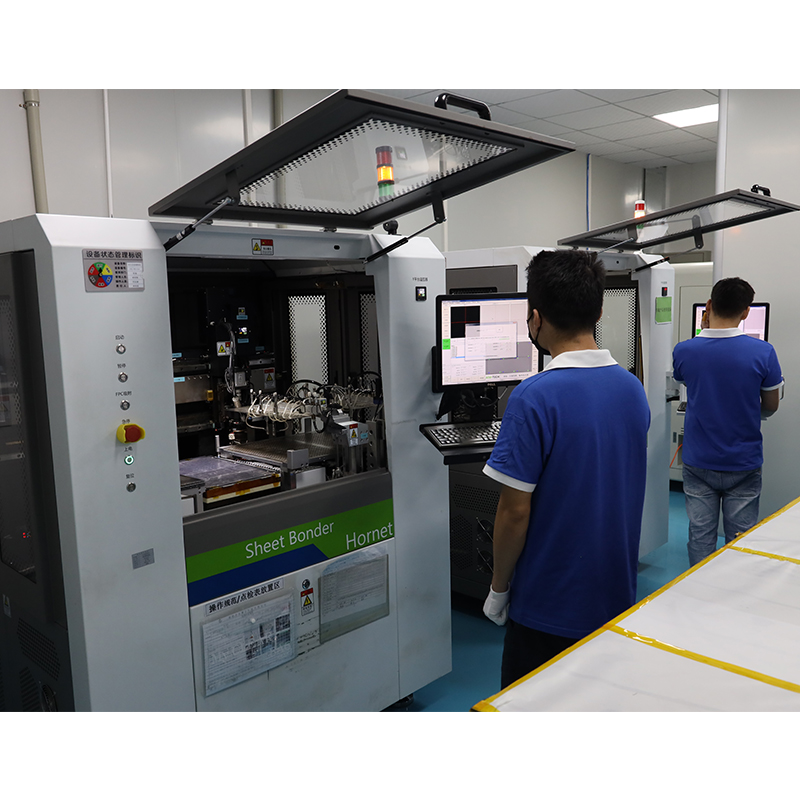Introduce:
In this blog post, we will explore the possibility of using rigid-flexible circuit boards in robotics, addressing its advantages, challenges, and potential applications.
Advances in technology have brought revolutionary changes to various industries, and robots are no exception. Robots have become integral to numerous fields, from manufacturing and healthcare to space exploration and entertainment. As these complex machines continue to evolve, their circuit boards play a vital role in their functionality and overall performance.
What is a rigid-flex circuit board?
Rigid-flex circuit board is a hybrid technology that combines the characteristics of rigid and flexible PCBs. They are composed of multiple layers of flexible material, such as polyimide or PEEK, sandwiched between rigid sections. These boards offer the flexibility of a flexible PCB while providing the structural stability of a rigid PCB. This makes them ideal for applications requiring electrical connections and mechanical support, which is common in robotics.
Advantages of rigid-flexible circuit boards in the field of robotics:
1. Space-saving design: One of the main advantages of rigid-flex circuit boards is their ability to save space in robotic systems. As robots become more compact and lightweight, every millimeter of space counts. Flexible layers in these boards make efficient use of available space, allowing designers to fit more functionality into a smaller form factor.
2. Improve reliability: Robotics often involve repetitive motion, vibration and harsh operating environments. Rigid-flex circuit boards are designed to withstand these challenging conditions, thereby increasing the overall reliability of the robotic system. The rigid section provides stability and protects the delicate electrical connections within the flexible layer, reducing the risk of failure and ensuring consistent performance.
3. Enhance electrical performance: Electrical signal transmission in robots requires high speed and low noise interference. Rigid-flex circuit boards provide excellent signal integrity because they provide shorter electrical paths and minimize impedance changes. This improves the performance and responsiveness of the robotic system, making its operations more efficient and accurate.
Challenges in implementing rigid-flex circuit boards in robotics:
While rigid-flex circuit boards offer many advantages, their implementation in robotics also comes with its own set of challenges. Some key considerations include:
1. Cost: Rigid-flex circuit boards can be more expensive compared to traditional rigid PCBs or flexible PCBs. The manufacturing process involves additional steps and specialized equipment, which can increase overall production costs. However, as technology advances and demand increases, the costs gradually become more affordable.
2. Design complexity: Designing rigid-flex circuit boards requires careful consideration of factors such as bend radius, component layout, and thermal management. As more layers and functions are integrated, the complexity of the design process increases. This requires specialized skills and expertise in PCB layout and robotics, which poses a challenge to engineers and designers.
Applications of rigid-flexible circuit boards in the field of robotics:
1. Humanoid robots: Humanoid robots imitate human movements and require complex control systems. Rigid-flex circuit boards can be used on a variety of joints and limbs, providing the necessary connectivity and flexibility needed for natural and smooth movement.
2. Drones: Drones, also known as unmanned aerial vehicles (UAVs), often require lightweight and durable circuit boards. Rigid-flex circuit boards can be integrated into drone frames, enabling efficient control and reliable communication between different components.
3. Surgical robot: Surgical robot implements minimally invasive surgery, which requires high precision and reliability. Rigid-flex circuit boards can be used in robotic surgical instruments to enable precise control, efficient energy transfer, and seamless communication between surgeons and robots.
In conclusion:
In summary, rigid-flex circuit boards offer numerous advantages in the field of robotics due to their space-saving design, enhanced reliability, and improved electrical performance. While there are still challenges to overcome, potential applications in humanoid robots, drones, and surgical robots show a bright future for using these boards. As technology continues to advance and the need for more complex robotic systems increases, the integration of rigid-flex circuit boards is likely to become more common.
Post time: Oct-09-2023
Back







